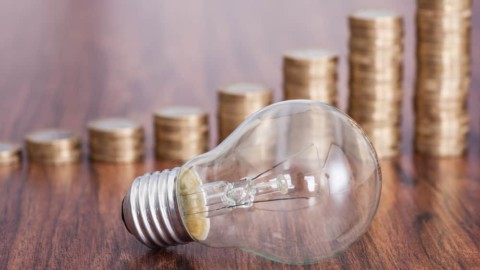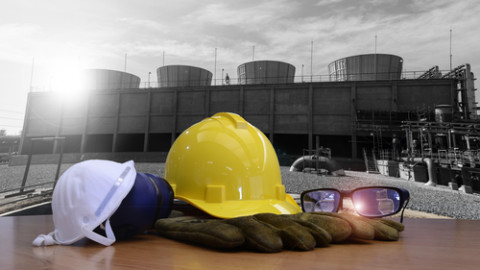by Christine Corbett, Chief Customer Officer, AGL
With a new year comes new trends, and with the energy transition continuing to accelerate, there are some key developments to keep an eye on. Whether you’re an investor or a consumer, get ready to see the energy market and the technologies that drive it become smarter and more affordable. AGL Chief Customer Officer, Christine Corbett, shares her views on some of the big trends the energy market can expect to see in 2022.
1. Electric vehicles to accelerate
It seems every week a new electric vehicle (EV) model is being released by car manufacturers as the demand for electric vehicles intensifies. Billboards and TV advertisements are no longer targeting the 2X2 Ute, but rather the ease and power a driver could have with an EV.
While adoption in Australia has been slower than in other countries, the momentum and demand is increasing, and I expect this trend will continue to grow in 2022.
Charging infrastructure is also becoming more accessible and, importantly, more affordable, as are the EVs themselves – making it a more achievable option for many consumers.
While pricing isn’t matching that of petrol-fueled cars yet, I believe the next five years will see a real transformation in what vehicles we drive, and how we drive them. Benefits can be even greater too when coupled with solar and battery technologies in the home or business, further driving emissions reductions and supporting Australia in meeting its long-term commitments.
At AGL, we want to be the power behind what is driving Australians, connecting them to a sustainable future and supporting their transition. Our EV subscription trial has continued to expand across the country, providing consumers with the opportunity to experience life behind the wheel of an electric vehicle, without the commitment of ownership.
As more EVs hit the open road, the big test for industry and governments will be focusing on initiatives that facilitate consumer access and develop technical insights to inform regulatory design.
By doing so, EVs will play an important role in achieving the energy transition, providing new job opportunities and seeing more Australians driving their way to a more sustainable future.
2. Power to the people
The last couple of years have, quite literally, kept us grounded at home, and we’ve soon come to realise that as much as they are places of rest and relaxation, they are also places where we tend to consume the most energy.
They require heating and cooling, they pump out the hot water, and they are filled with seemingly endless electrical appliances like microwaves, refrigerators, and kettles.
In the midst of the energy transition, households are becoming increasingly empowered to be part of our journey to a lower emissions future, resulting in more options to make changes to household energy consumption right from the palm of our hands – our smartphones.
Indeed, there are the smart devices that we have grown accustomed to – robotic vacuums, voice-controlled smart speakers and universal remote controls – but in 2022 I think we’ll see a lot more of these technologies applied to our larger white goods like air-conditioners, refrigerators and dishwashers.
Smart meters and monitors offer a promising strategy for reducing consumption, particularly when demand is at its peak. More and more energy retailers are offering programs for customers which notify them when demand for electricity is high, giving customers the choice to opt in or out of these ‘peak events’.
AGL’s Peak Energy Rewards program is one such system, and customers can be rewarded with credits if energy reduction targets are met. We believe that affordable, sustainable energy should be the reality for every customer.
Product and technology offerings need to evolve in line with our changing wants and needs and, importantly, offer solutions that are more efficient and affordable.
3. Ready to charge a brighter future for batteries
Storage is one thing we can never seem to have enough of, and that applies to the energy industry, too. As renewable energy sources continue to enter the market, batteries – both household and grid-scale – will play a critical role in stabilising the grid.
As demand for household solar continues to grow, so too does the demand for solar batteries. These batteries, when partnered with existing solar panels, store unused energy generated during the day to use at night, making the most of solar energy and now only leaving behind reduced energy costs.
When we view this technology at a much larger scope, grid-scale batteries are well-positioned to respond quickly and flexibly to the market and energy system’s needs. If we then add a combination of other renewable and firming technologies to the mix like gas, hydrogen, and pumped hydro, we have a strong ecosystem that I believe will eventually power all of Australia’s future energy needs.
With this concept in mind, AGL has developed an integrated, low carbon industrial energy hub strategy for our existing thermal generation sites, one that we have seen executed successfully overseas.
As the first unit closure of Liddell fast approaches and its 250MW grid-scale battery receives development approval, we are very much looking forward to this milestone to pave the way for our future transition and rehabilitation projects.
4. Carbon offsets taking off
Businesses know they can’t offset their way to carbon neutrality without additional compensation measures. Every business, big or small, must reduce its emissions and improve its business practices first and foremost, but once that has been addressed offsets can be used to fill the gaps and assist businesses to reach carbon neutrality.
Internationally and here in Australia, we are seeing offset markets becoming more sophisticated and a number of accepted and refined methodologies are being developed. This, combined with the increasing demand for offsets, has resulted in the offset market becoming
one of the fastest-growing sectors in the world.
Australian carbon credits regulated by the Clean Energy Regulator are seen as a high-quality offset that is appreciating in value. Over the course of 2021, the market saw an increase of over 200 per cent in ACCU spot price, and many analysts are predicting this will rise further in the coming years.
Landholders have enormous potential to capitalise on this market, particularly indigenous organisations who can generate credits through practices like savanna burning on cultural lands.
Looking after country now has the added opportunity of providing economic development for their communities while also meeting Australia’s environmental commitments. We know that creating a low carbon future is important to the businesses that we work with, and through innovation and agility, we are able to develop integrated energy solutions to meet their decarbonisation goals, as well as ours at AGL.
5. Discussions on market design
I always encourage healthy discussion, whether it be with my family at the dinner table, in meetings at the workplace, or over lunch with friends. Discussion brings about fresh ideas and opinions that we may otherwise not have thought of, generally leading to a more efficient, all-encompassing solution.
The transition sees the energy industry evolving at a rapid pace and I anticipate that in the coming months there will be increased discussion and collaboration between government and key stakeholders on the structure of the National Electricity Market (NEM).
As renewable technologies and developments continue to enter the market, the NEM needs to evolve into a modern energy system that remains fit to meet the needs of consumers. This may mean a change in reforms that will help to maintain grid security and reliability, and provide certainty for future investment.
As we see this progress, it’s critical that the government and key stakeholders, such as large energy companies like AGL, work together to ensure a reliable and affordable energy transition. We know energy, and AGL has been actively involved in the NEM 2025 consultations and we look forward to further discussion this year.

















